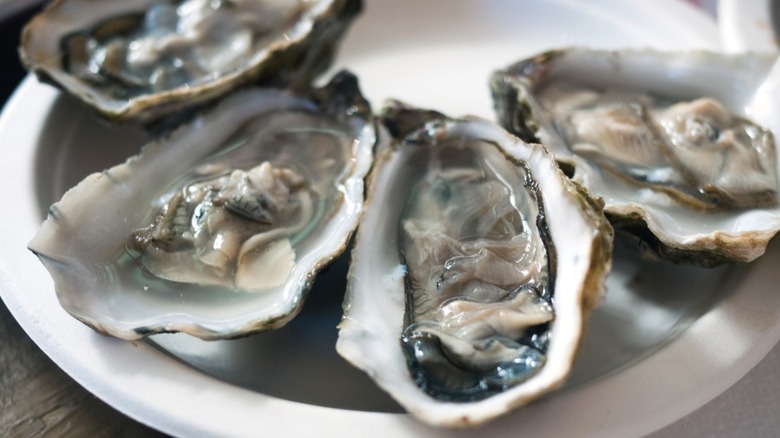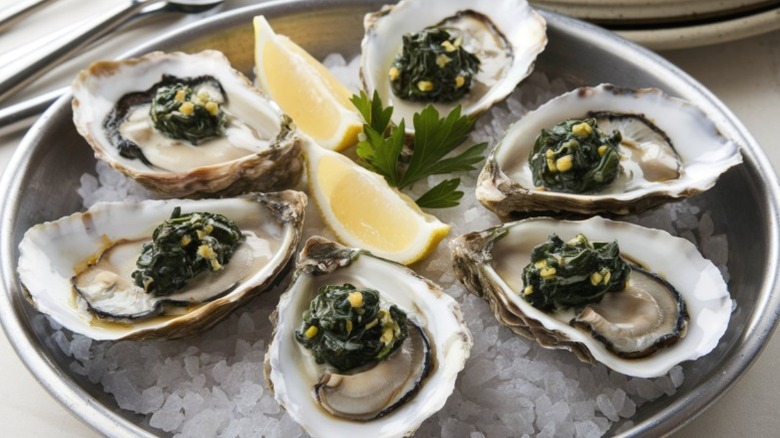The Key Differences Between West Coast And East Coast Oysters
If you've lived near the sea, you've probably had some experience with oysters. Salty and briny, these mollusks are often shucked and served with cocktail sauce or Tabasco. Whether or not you like them (some of us can't get past the texture), they're a seafood staple and enough people enjoy them that they're still an expensive commodity. Like many other foods, where the oysters are from matters. So, what separates oysters on the East Coast from those on the West Coast?
Taste is a major factor, of course. East Coast oysters tend to be briny and complex in their flavor, while West Coast oysters are mild and sweet. There's also the matter of texture, with East Coast oysters being a little bit chewier than their West Coast counterparts. We talked on the topic with Nate Siegel, founder of Cheeky's in St. Petersburg, Florida, who told us all about what to expect from the Atlantic.
"The five categories of oysters are: Atlantic, Pacific, Kumamoto, European Flats, and Olympia," Siegel told The Takeout. Siegel, situated as he is on the East Coast, stands by the Atlantic variety. "We think these are the best oysters to eat raw, with their salty, briny, and clean mineral flavor and medium size."
Environment changes the flavor of oysters
The specific variety of oyster, however, is only part of the story. "The environment in which oysters are grown really makes the flavor of the oyster," Siegel said. "Similar to how terroir (land) dictates the flavors of wines, merroir (sea) dictates the flavors of oysters." This is why, for instance, East Coast oysters have flavor notes of iron and seaweed, while West Coast oysters have been described as tasting buttery or even fruity.
The reason for this disparity? It comes down to the water. Because the Atlantic Ocean is a lot saltier than the Pacific, its oysters are as briny and bracing as a jet of ocean spray, with added minerals providing more complexity in its flavor. But then again, something straightforwardly mild and lovely, as West Coast oysters tend to be, is easy to appreciate, too. Wherever you get them from, just be sure that your oysters are safe to eat if they're raw and practice your shucking to avoid any mistakes at the dinner table.

